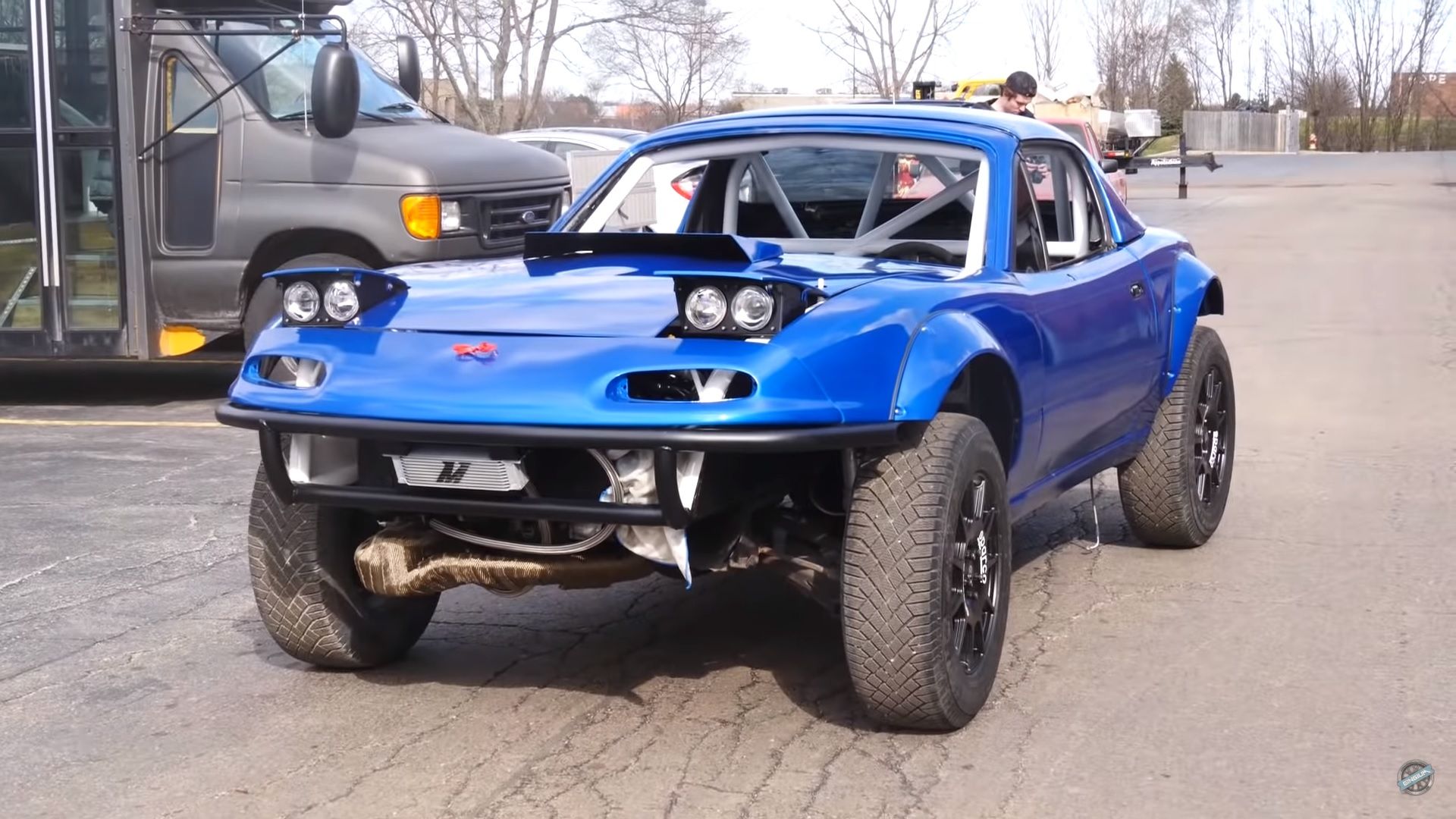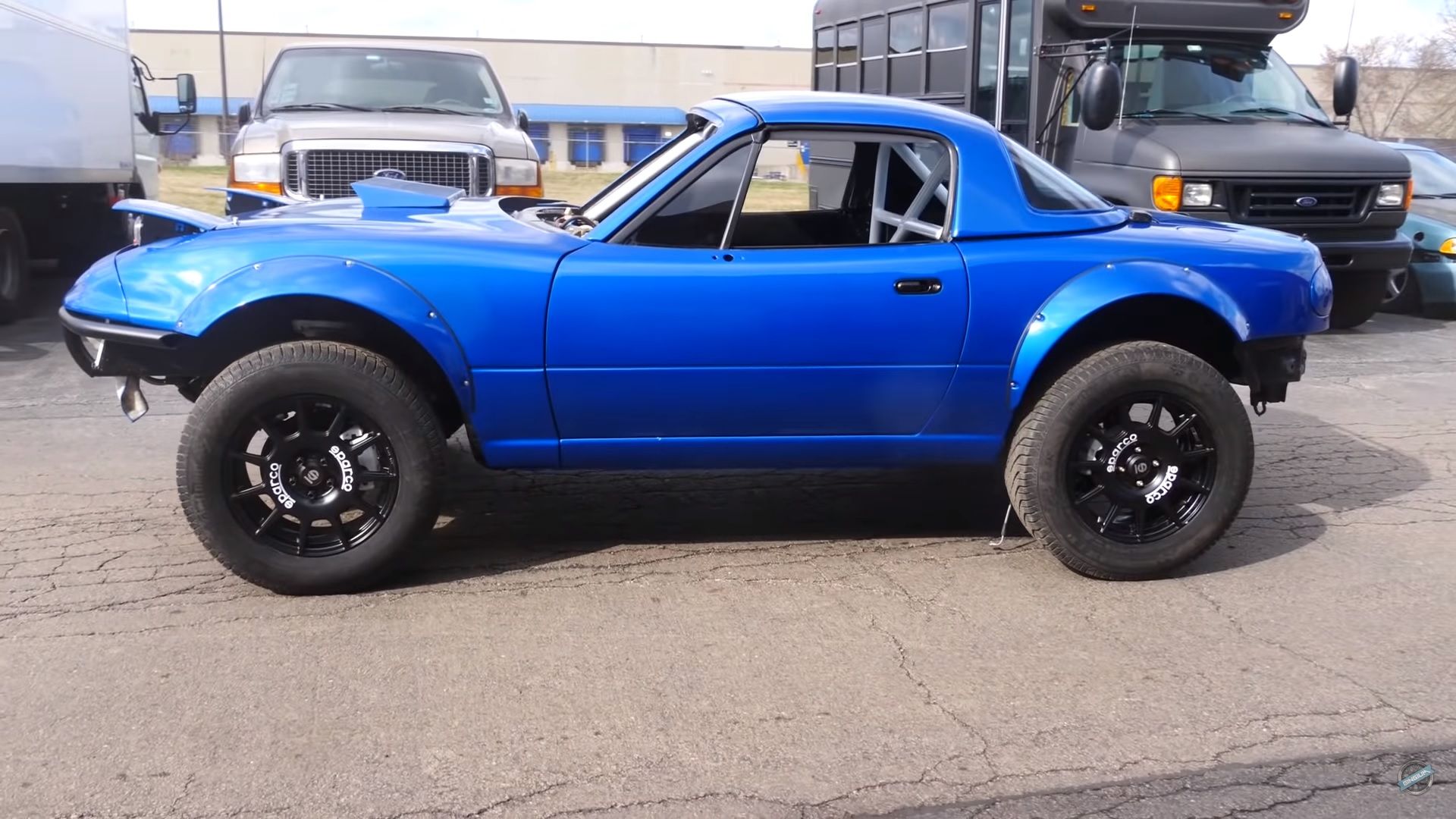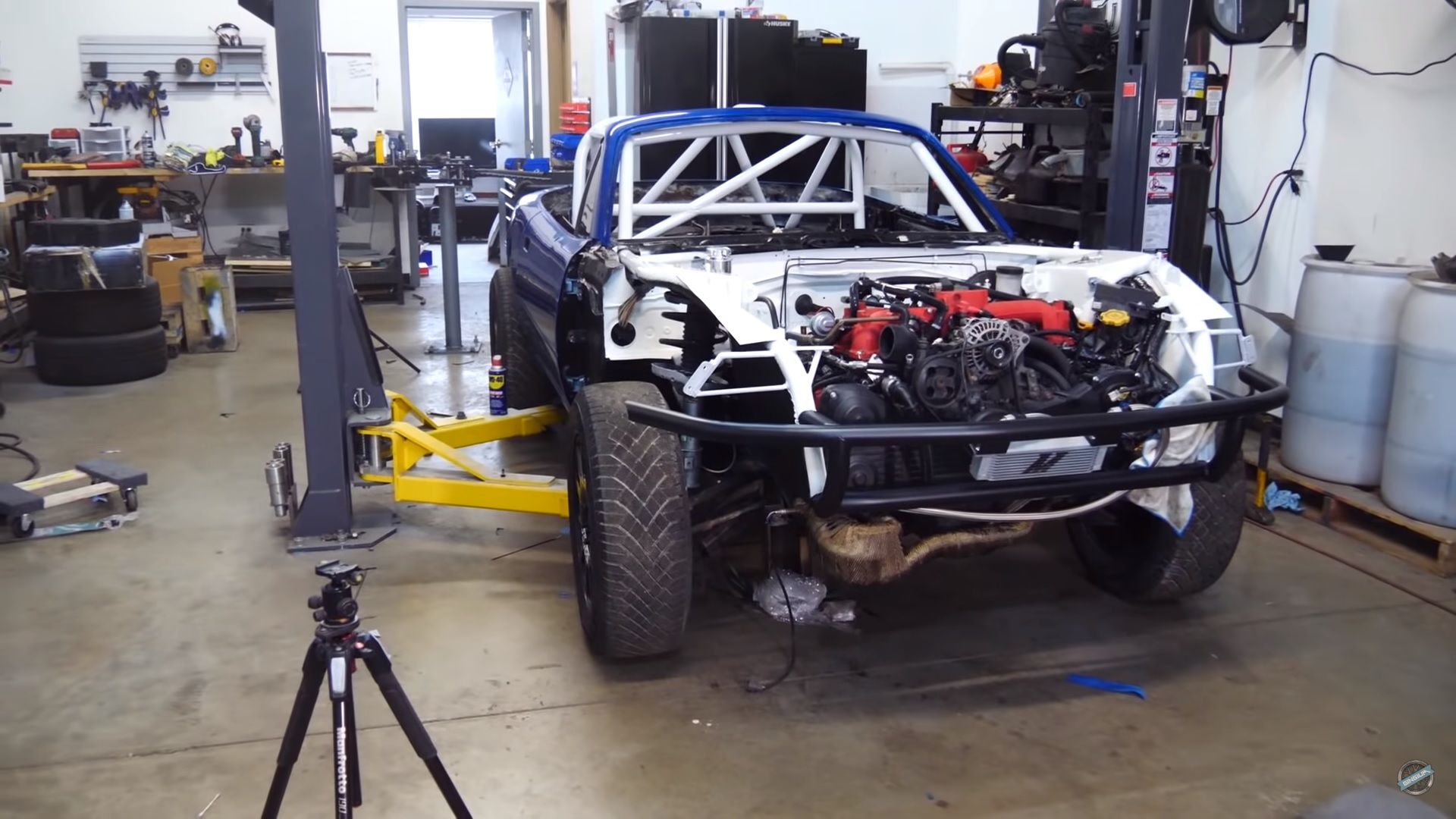As we’re all aware, Mazda didn’t build the Miata with off-roading in mind. Then again, neither did Porsche with the 911 and we’ve seen our fair share of off-road-ready Safari-badged Neunelfers out there.
Even though it’s a sports car at its very core, the Miata, just like any other vehicle that roams the earth’s surface, can be tweaked and customized to tackle everything that’s beyond the beaten path. And the best example is this YouTube project we stumbled upon.
An off-road Miata you say? Tell me more!
YouTuber Gingium is building an off-road Mazda Miata based on what used to be a second-generation NB model. He’s got a neatly-documented build process, in fact, with a new video for every new feature or adjustment the car is getting. And as per the channel’s latest video, the AWD Miata is almost finished.
First of all, you need to know that the whole idea behind the build was to take a Subaru drivetrain and basically stuff it on a Miata chassis. That Subaru drivetrain includes, among other parts, the EJ205 2.0-liter, flat-four engine used in WRX models sold outside Japan from 1999 onwards.
In the 2002-2003 Subaru Impreza WRX, the gasoline engine is slapped with a Mitsubishi turbocharger, delivers 227 horsepower and 217 pound-feet of torque, and redlines at 7,000 rpm. That is, before any additional tuning.
From here on, the project received a lot of add-ons, including the famous World Rally Blue pain job seen on so many Subarus. Other goodies included:
-* long-travel rear suspension
-* a roll cage
-* upgraded clutch
-* custom wheels
-* rear mount radiator
-* 600-horsepower capable fuel system
-* plus a handful of engine bay mods needed for the EJ205 powerplant to fit in
Now, don’t go thinking all these bits and bobs installed themselves overnight. As it turns out, this project needed and still needs a lot of work and sweat, so the least you could do is check out Gingium’s channel and his highly detailed build process.
That said, we’re hoping to the the AWD Miata in action as soon as possible because it might very well be one of the coolest DIY car projects we’ve seen in a while.




